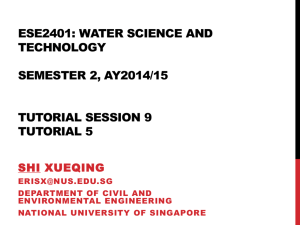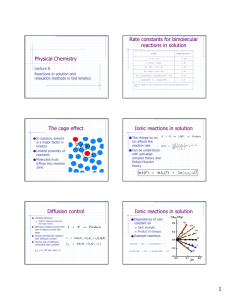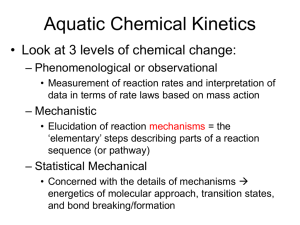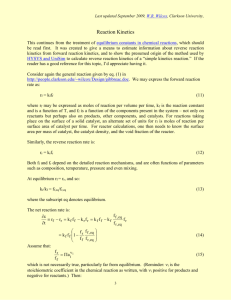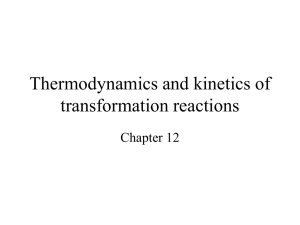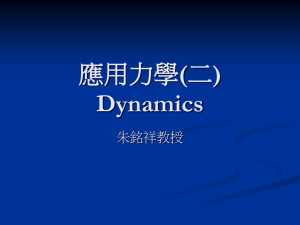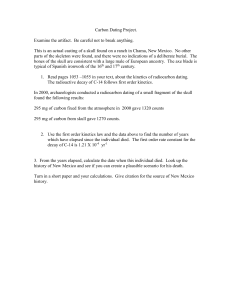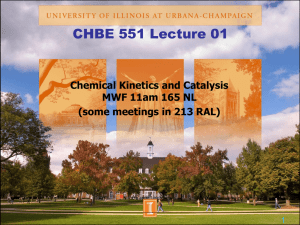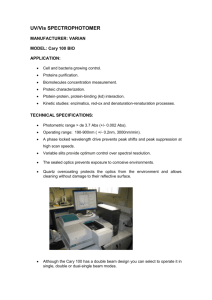Lecture22: Fast reaction kinetics
advertisement
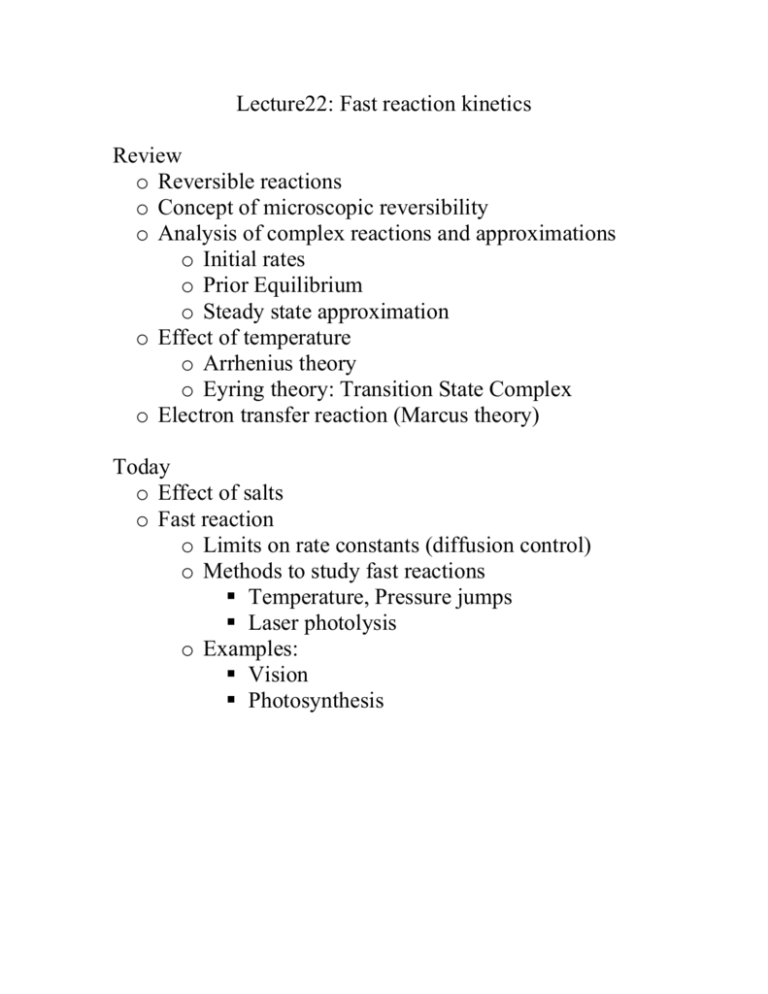
Lecture22: Fast reaction kinetics Review o Reversible reactions o Concept of microscopic reversibility o Analysis of complex reactions and approximations o Initial rates o Prior Equilibrium o Steady state approximation o Effect of temperature o Arrhenius theory o Eyring theory: Transition State Complex o Electron transfer reaction (Marcus theory) Today o Effect of salts o Fast reaction o Limits on rate constants (diffusion control) o Methods to study fast reactions Temperature, Pressure jumps Laser photolysis o Examples: Vision Photosynthesis Fast reaction and Limits on the rate constants. Arrhenius or Eyring models predict temperature dependence of k: k A. exp( Ea / kT ) At sufficiently high temperature, reaction rates become large. What physical process might limit the maximum rate? In solutions, we can envision reacting molecules to encounter their reaction partner governed mainly by how fast they move. As we discussed before, the process encounter is governed by diffusion. In this case: Kinetics of such fast reactions is studied using relaxation methods. Relaxation methods. If we were to perturb such reaction, by causing temperature or pressure jump in very short time (micronanoseconds), the system will approach new equilibrium since: Changes in concentration of the reactant can be monitored with high speed spectroscopic techniques. If however, the perturbation is relatively small the kinetics of such processes becomes especially simple. Note that this is simply a first order equation. The most intriguing aspect of the relaxation method is that the approach to the equilibrium is always given by simple first order kinetics. Only the value of depends on the particular type of kinetics one is dealing with. Examples For simple dimerization of proflavin it is found that This analysis, i.e., method of relaxation, allows simultaneous determination of forward and reverses reaction rates and the equilibrium reaction constant! Example 2: Dimerization of nucleotides Dimerization of nucleotides (part 2) Since for dimerization From the slope and intercept we can determine forward and reverse reaction rates. Thus, relaxation methods are extremely powerful and simplify tedious kinetics. The power of the method lies in reducing complex kinetics equation to simple first order kinetics. There is yet another important class reactions involving photochemical reactions, where the kinetic problem is reduced to first order kinetics. Photochemistry Beer-Lambert’s law Let us first consider a case light absorption by light molecule. As we will note later on, even though light is considered to have wave nature, it also can be thought in terms of particles, the so-called photons. Thus, we can imagine absorption process as kinetic process wherein one-photon colloids with molecule resulting in light absorption. Kinetically: M P M* How do we then describe concentration of light? Clearly it must be proportional to the intensity of light. Now imagine a process in which we let a beam of light enter our sample solution. Light photons are lost continually along the path on light ray by the above absorption process. We represent the process as a first order differential equation: dI k [ M ]I dx I I 0 exp( k[ M ]l ) 1 I0 I0 ln log k[ M ]l I 2.303 I I0 log A 2.303k[ M ]l I
